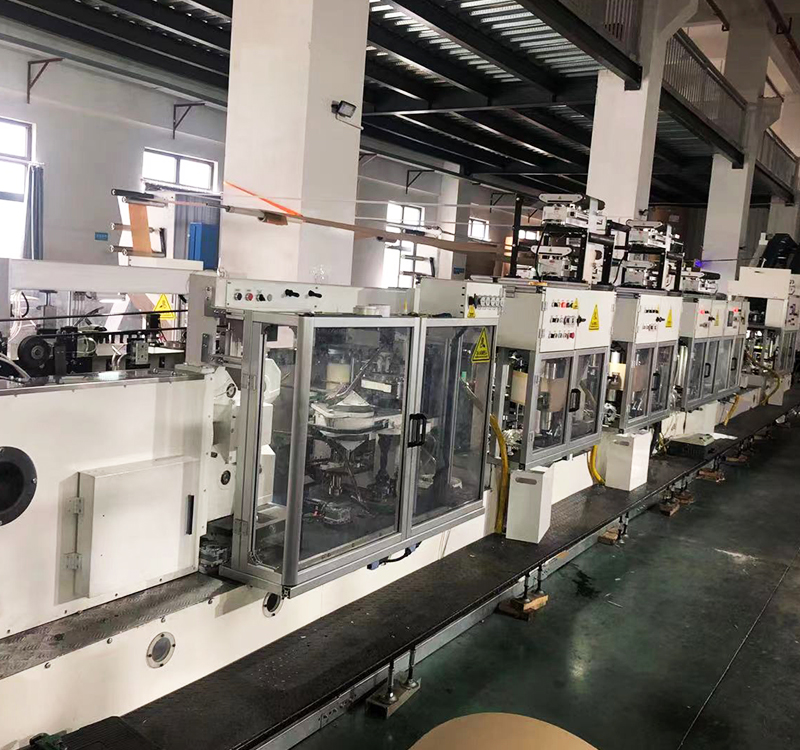Advancements in Cross Bottom Paper Bag Machinery: Precision Engineering Meets Sustainable Packaging Solutions
Release time:2025-05-26 Classification:Knowledge
The evolution of packaging technology has seen remarkable strides in recent years, with cross bottom paper bag machines emerging as a cornerstone of modern industrial automation. Designed to streamline the production of durable, eco-friendly paper bags, these machines combine precision engineering with innovative design principles to meet the growing demand for sustainable packaging across industries. This article explores the technical intricacies, operational advantages, and environmental benefits of cross bottom paper bag machinery, shedding light on its critical role in contemporary manufacturing.

Technical Overview: How Cross Bottom Paper Bag Machines Work
At its core, a cross bottom paper bag machine automates the fabrication of paper bags with reinforced cross-folded bases, a design renowned for its load-bearing capacity and structural integrity. The process begins with high-speed unwinding of kraft paper or recycled material rolls, which are precisely cut to size using laser-guided systems. Advanced servo motors then coordinate the folding and gluing of the bag's cross bottom, ensuring consistent seam alignment and adhesive application.
Key components such as programmable logic controllers (PLCs) and touchscreen interfaces enable operators to adjust parameters like bag dimensions, paper weight, and production speed in real time. Modern machines often integrate vision systems to detect defects, minimizing material waste and downtime. The final output—uniform, leak-resistant bags with flat or gusseted sides—is tailored for applications ranging from food packaging to bulk industrial goods.
Operational Advantages: Efficiency Meets Versatility
Cross bottom paper bag machines excel in high-volume production environments, achieving outputs of up to 120 bags per minute while maintaining tolerances as tight as ±0.5 mm. Their modular design allows rapid tooling changes, facilitating seamless transitions between bag sizes (e.g., 5 kg to 25 kg capacities) and handle types (twisted, flat, or ribbon). This adaptability makes them indispensable for manufacturers serving diverse markets.
Energy efficiency is another hallmark, with many models incorporating regenerative braking systems and low-heat ultrasonic sealing technologies. These features reduce power consumption by up to 30% compared to conventional machines, aligning with global sustainability initiatives. Additionally, automated quality assurance protocols—such as air pressure testing for valve bags—ensure compliance with international packaging standards.
Sustainability-Driven Innovation
As industries pivot toward circular economy models, cross bottom paper bag machines address critical environmental priorities. By optimizing material usage through nested cutting patterns and precision folding, they minimize paper waste by approximately 15–20% per production cycle. Compatibility with unbleached, FSC-certified papers and water-based adhesives further enhances their eco-profile, enabling brands to meet stringent regulatory requirements and consumer expectations for greener packaging.
Moreover, the durability of cross bottom bags reduces the need for secondary packaging layers, lowering overall carbon footprints in logistics. Several manufacturers now offer retrofit kits to upgrade older machinery with energy recovery systems, extending equipment lifespans while reducing electronic waste.
Industry Applications and Future Trends
The versatility of cross bottom paper bag machines has spurred adoption across sectors:
- Food Industry: Producing grease-resistant bags for flour, grains, and snacks.
- Chemicals: Manufacturing multi-wall laminated bags for fertilizers and industrial powders.
- Retail: Creating premium-branded shopping bags with custom prints.
Emerging trends include the integration of IoT-enabled predictive maintenance, where sensors monitor wear patterns in real time, and AI-driven optimization algorithms that adjust machine settings based on material batch variations. As e-commerce drives demand for resilient shipping packaging, future iterations may incorporate hybrid designs compatible with compostable bioplastics or embedded RFID tags for supply chain tracking.
Cross bottom paper bag machinery represents a convergence of technical sophistication and environmental stewardship. By delivering unmatched precision, scalability, and sustainability, these systems empower manufacturers to navigate the dual challenges of rising consumer demand and ecological responsibility. As material science and automation technologies evolve, cross bottom bag producers are poised to redefine packaging standards for a resource-conscious world—one perfectly folded seam at a time.






